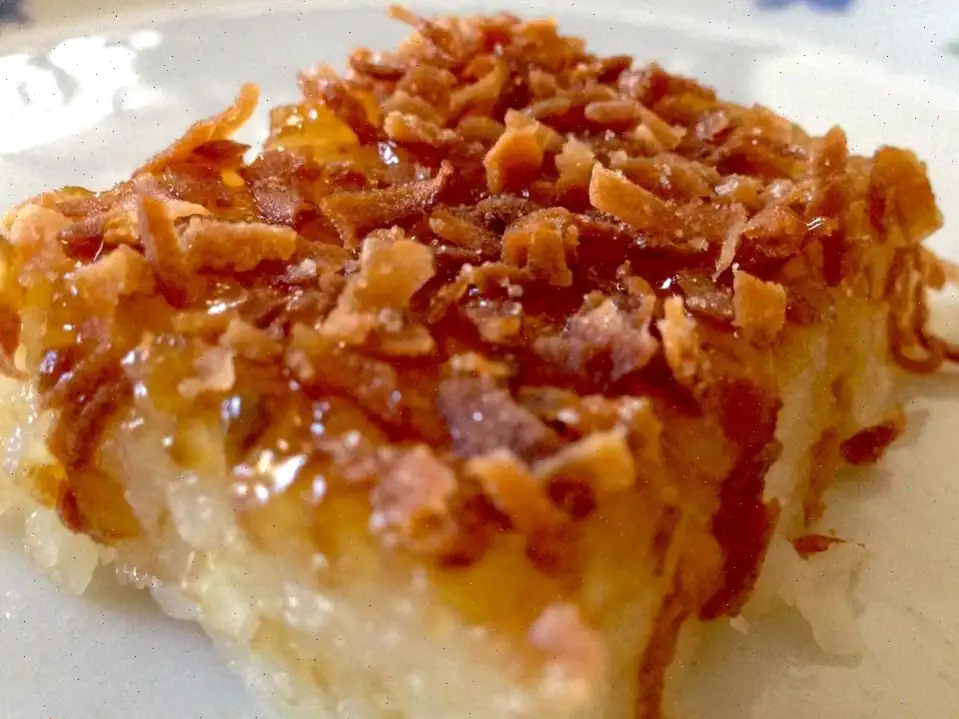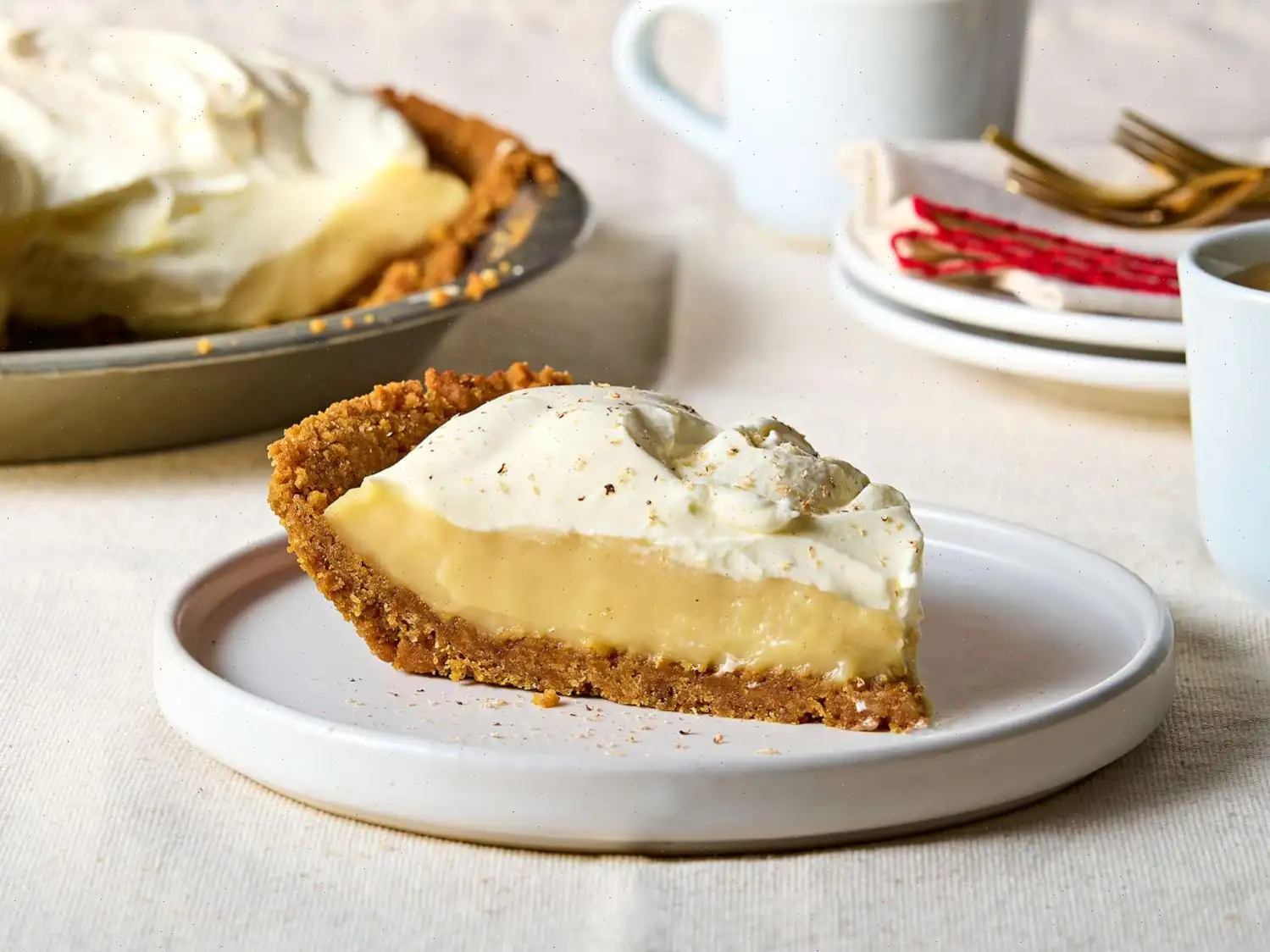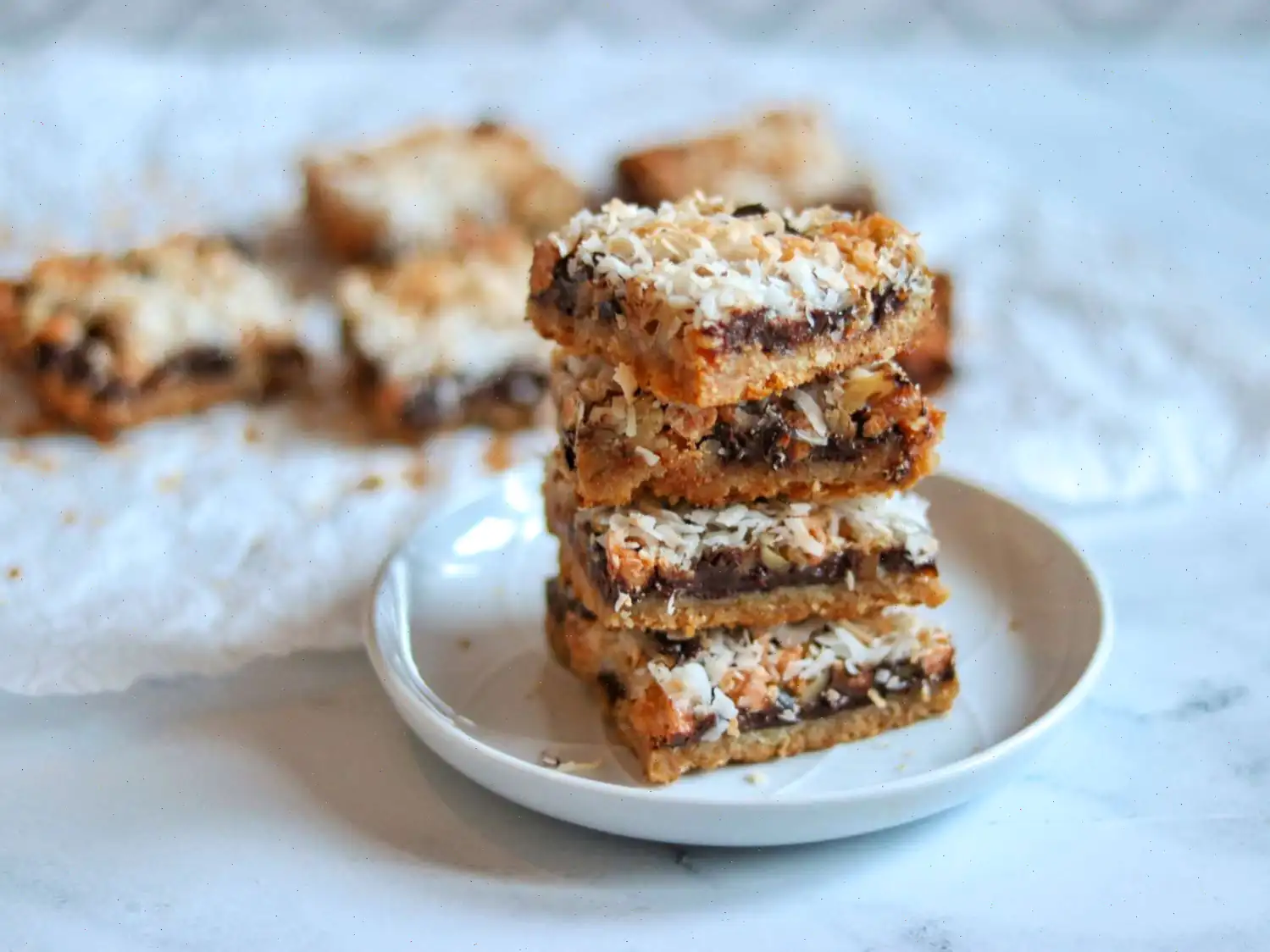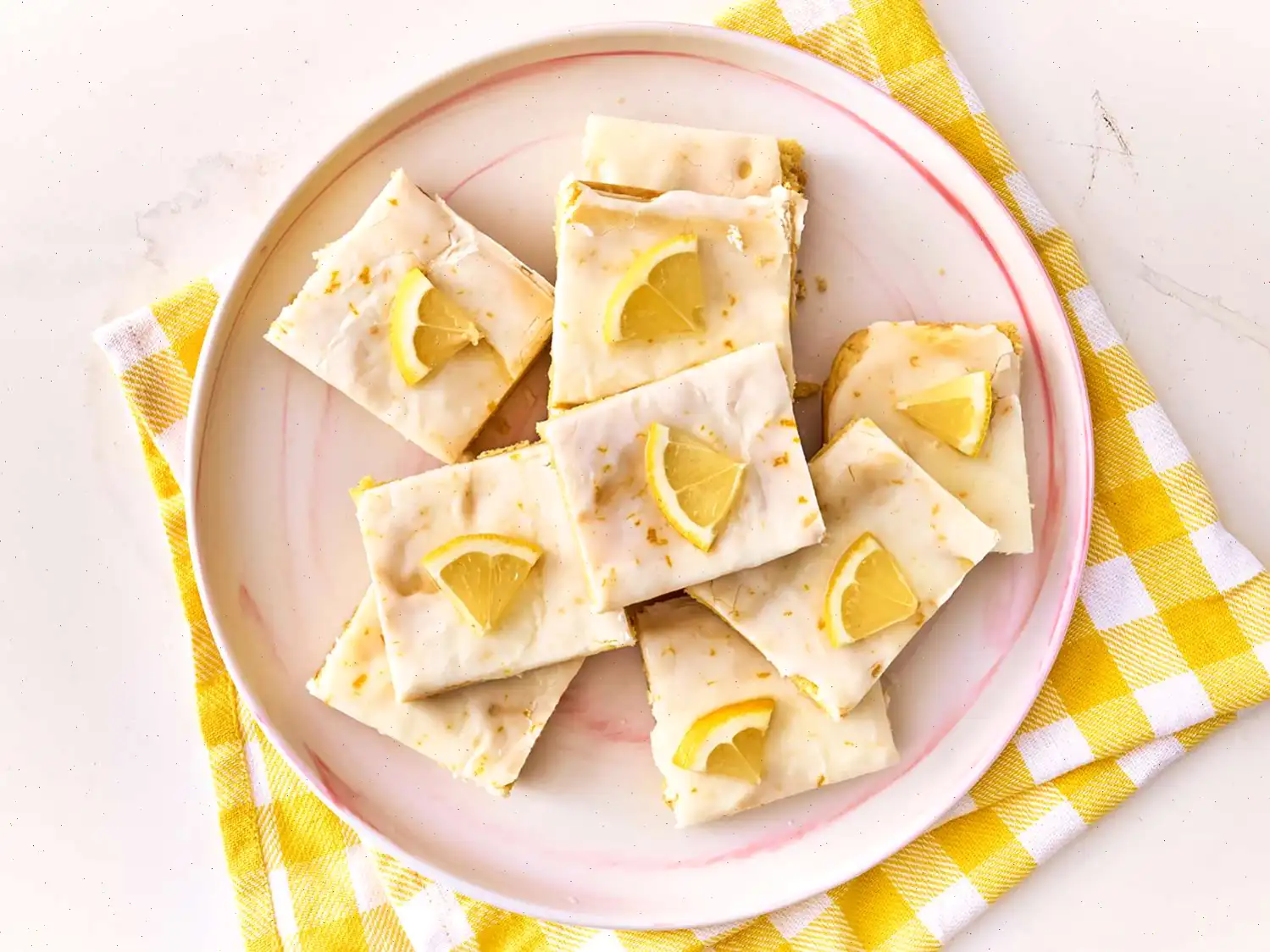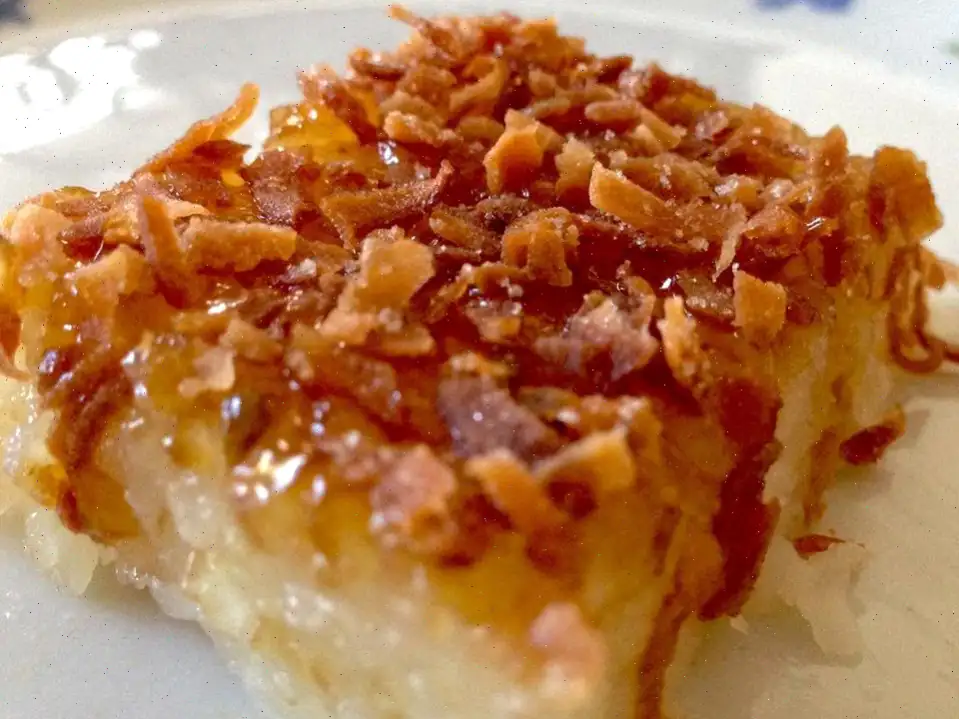
Biko Recipe
Ingredients
- 4 cups uncooked glutinous white rice
- 6 cups cold water
- 1 (14 ounce) can coconut milk, divided
- 1 cups white sugar
- 1 cups brown sugar
- 3 tablespoons coconut preserves (such as Phil Supreme)
Directions
- Soak the rice overnight in the water to ensure it softens and absorbs moisture.
- Preheat your oven to 350F (175C) and grease a 9x13 inch baking pan.
- In a medium saucepan, combine the soaked rice with the soaking water, half of the coconut milk, and the white sugar. Cook over medium heat, stirring constantly, until the mixture becomes tender and thickens, which should take about 20 minutes.
- Transfer the cooked rice mixture into the prepared baking pan and spread it evenly.
- In a separate small saucepan, stir together the brown sugar, the remaining half of the coconut milk, and the coconut preserves. Heat this mixture until it begins to boil, ensuring that everything is well combined.
- Carefully pour the hot coconut mixture over the rice in the baking pan, covering it evenly.
- Place the pan in the preheated oven and bake for about 25 minutes, or until the topping has thickened to your desired consistency.
- Once baked, remove from the oven and let it cool completely. After it has cooled, cut into squares and serve.
Nutrition Facts
| Nutrition Facts | Per Serving |
|---|---|
| Calories | 463 |
| Total Fat | 10g |
| Saturated Fat | 6g |
| Sodium | 17mg |
| Total Carbohydrate | 90g |
| Dietary Fiber | 2g |
| Total Sugars | 38g |
| Protein | 5g |
| Vitamin C | 0mg |
| Calcium | 43mg |
| Iron | 2mg |
| Potassium | 142mg |
Servings Per Recipe: 12
Calories per Serving: 463
Biko is a traditional Filipino dessert made with glutinous rice, coconut milk, and brown sugar. This sweet treat is often served during special occasions, particularly in Filipino households and celebrations. It is rich, sticky, and full of coconut flavor, making it a favorite dessert for both locals and those exploring Filipino cuisine.
Origin and History of Biko
The history of Biko traces back to the Philippines, where it has been a beloved dish for generations. This dessert is part of a larger tradition of rice-based sweets in the Philippines, which is a reflection of the country's agricultural roots. Rice is a staple food in the Philippines, and Biko is a way to elevate it into a dessert using the local ingredients of coconut milk and brown sugar. It has been enjoyed across the archipelago, often made at home for family gatherings, fiestas, and holidays.
Regional Variations of Biko
Biko is widely enjoyed throughout the Philippines, but regional variations do exist. In some areas, it may be topped with a richer layer of coconut jam or "latik," which is made by simmering coconut milk to create a caramelized syrup. In provinces like Laguna and Batangas, the topping is often a crucial part of the dishs flavor profile, giving it a distinct sweetness. Meanwhile, in other regions, the focus may be more on the consistency and texture of the sticky rice. Despite these regional tweaks, the fundamental ingredients of glutinous rice, brown sugar, and coconut milk remain the same.
How Biko Differs from Similar Dishes
Biko is often compared to other Asian sticky rice desserts, such as Thai sticky rice with mango or the Indonesian "ketan" dishes. However, what sets Biko apart is its use of coconut milk and brown sugar, which gives it a rich, caramel-like flavor. Additionally, Biko is typically baked, unlike some other sticky rice desserts that are steamed. This baking process adds to the dish's distinctive texture and enhances the flavor of the coconut topping, creating a golden crust on top.
Where Biko is Typically Served
Biko is most commonly served at Filipino gatherings, including birthdays, Christmas, and other festive occasions. It is also a popular offering during religious celebrations, such as the feast of the "Sto. Nio" (Holy Child) and other local festivals. Its often cut into squares or served as a "kakanin" (sweet rice cake) alongside other Filipino desserts like "leche flan" or "sapin-sapin." The dish is also a great addition to potlucks, as its easy to transport and share among friends and family.
Fun Facts About Biko
- The name "Biko" is derived from the Filipino word "biko," meaning sticky rice, which perfectly describes the dish's main ingredient.
- Biko has become a symbol of Filipino hospitality. It is often prepared and shared as a way to welcome guests and show generosity.
- While the traditional recipe uses glutinous rice, some modern versions incorporate other grains, such as regular rice or even quinoa, for a healthier twist.
- In addition to coconut preserves, some cooks top Biko with a variety of ingredients, including shredded coconut, macapuno (coconut sport), or even crushed nuts for added texture and flavor.
Conclusion
Biko is more than just a dessert; its a delicious representation of Filipino culture, community, and tradition. Whether you're making it for a family celebration or enjoying it at a local Filipino restaurant, Biko offers a taste of the Philippines that is both comforting and rich in flavor. Its combination of glutinous rice, coconut, and brown sugar will leave you craving more with every bite.
FAQ about Biko Recipe
Comments
Samantha Jackson
03/05/2023 02:14:44 PM
My wife is Filipino, so I was on the lookout for an authentic biko recipe from the Philippines. Following the recipe closely, I added unsweetened shredded coconut on top after pouring the brown sugar mix. My wife absolutely loved it! I often make this dish for Filipino gatherings, and it never fails to impress.
John Allen
04/03/2023 08:35:28 PM
Absolutely wonderful. This dish brought back nostalgic memories from my childhood. I combined dried coconut with rice and it was a perfect combination. Thank you for sharing this fantastic recipe.
Jason Hernandez
07/06/2024 05:06:01 PM
Great experience, everyone couldn't get enough!
Michael Ramirez
12/13/2023 11:00:55 AM
I have tried this recipe multiple times and it turns out amazing each time!
Robert Lopez
11/07/2022 08:49:08 PM
Unfortunately, we were out of coconut, so we opted to sprinkle crushed coconut crisp cookies on top instead. Absolutely adore this recipe!
Aaron Nguyen
02/08/2023 12:19:07 AM
I modified the recipe for 5 servings, substituted 1/2 cup of white sugar with 1/2 cup of brown sugar, and omitted the coconut preserve. It was difficult to resist diving in before it had cooled, but once I did, it was worth the wait. Not too shabby for my initial attempt!


